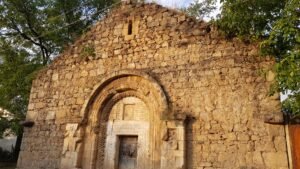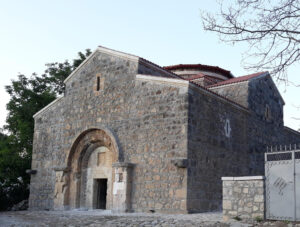Tsaghkavank
Hadrut Province, Tsakuri village
Tsaghkavank is located in the center of Tsakuri village of the Hadrout region. Only the main "Surb Astvatsatsin" church has been preserved from the old complex and differs by its round portal (door). The church is rectangular on the outside and has a domed three-nave basilica on the inside. From an architectural point of view, the church does not have a magnificent design. The walls are plastered inside.
The oldest inscription on the khachkar dates back to 1198, which means that the monastery was already operating here in the 12th century. This is supported by the inscription made on the front stone of the church door, according to which the church was built by Archimandrite Hakob Tangyants in 1682.
In the southern window of the building there is a snake-like ornament, about which the elders tell that once the architect of the church was angry with a student and said: "Let the snake bite you." And so it turns out that the same day the student is bitten by a snake and the latter dies. As a sign of fulfillment of this word, the penitent asks to carve a serpent-like stone as a reminder and instruction, which has been done.
From an architectural point of view, the church has restrained means of expression. The inside was plastered, the columns, arches, niches, the cornices of the stage were lined with polished, bluish stones. The walls are more than one meter thick. The tabernacles, the steps leading to the roof, bear some resemblance to the details of the main church of Gtchavank.
The presence of facades on the other western side indicates that the church had a dome, which was organically connected with the external volume of the building. This is suggested by the three-dimensional cross-sectional symmetry of the central dome of the hall, the forty columns and the arches bridging each other, the circle on them.
In 2010, a group of benefactors initiated a donation fund for the renovation of St. Astvatsatsin Church in Tsakuri. The church was renovated and the works were almost completed.
Bibliography
«Diocese of Artsakh» (2009), Erevan, 411 pp.






